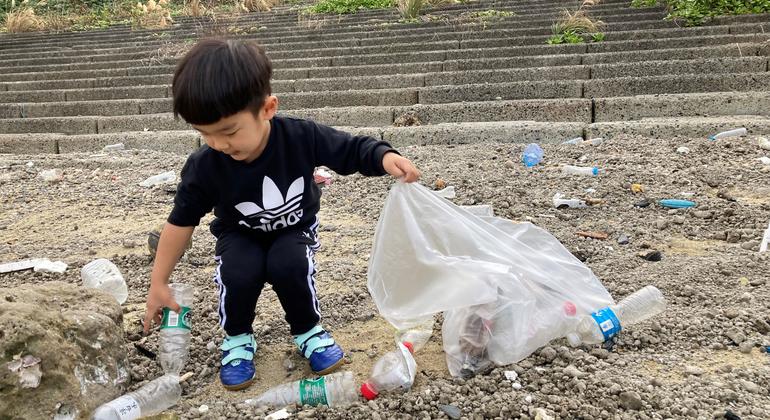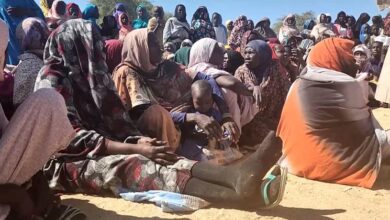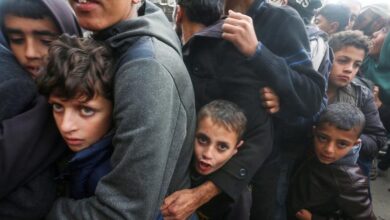Japan: Protecting mother tongue and mother nature

Although both Nami and Tomoyuki were born on Okinoerabu Island (which currently has only 12,000 residents), neither of them learned to speak Shimamuni – a form of the local Kunigami language – fluently as children.
Kunigami has been added UNESCO Atlas of the World’s Endangered Languages in 2009 and classified as “certainly endangered” to raise public awareness that “children are no longer learning the language as their mother tongue at home.”
A family in action
After learning that Okinoerabu Island’s indigenous language was officially considered endangered, the couple and their four children took it upon themselves to turn their love of language into impactful actions and resonated far beyond the island.
Residents of Okinoerabu Island are not only worried about losing their language but are also increasingly worried about the increase in marine debris. What started as a school project assigned during summer vacation, the Sao children decided that they could solve both problems simultaneously by carrying out daily beach clean-ups while also participating in other activities. language activities, such as singing and keeping a diary in Shimamuni to record his day. -progress every day.

Okinoerabu Islanders collect trash on the beach.
Leveraging the Shimamuni language as a thread of shared local identity that connects people from various walks of life, the Sao family has expanded its conservation activities to include cooking local delicacies , cut hair for nursing home residents, learn arts and crafts at the community center, and participate in the “Shimamuni Salon,” where language lessons are held and local environmental issues are regularly discussed . The goal is to train the next generation of environmentally conscious Shimamuni speakers.
“Without these community-oriented activities, this language will be lost,” said Dr. Sumittra Suraratdecha, assistant professor of linguistics at the Research Institute of Asian Languages and Cultures (RILCA) in Thailand. became extinct when older speakers died.”
Linguistic diversity and sustainable development
When asked about the underlying motivation for his family to engage in such diverse activities, Tomoyuki mused about the urgency of achieving an ambitious goal. Sustainable development goals (SDG) by 2030.
He felt that instead of imparting to his children the knowledge he acquired through formal education 20 to 30 years ago, it was better to support their learning by doing and from there enabling them to gain practical experience that will help them make a difference. .

Residents of Okinoerabu Island prepare local delicacies.
As it turns out, the Shimamuni language not only serves as a means of transmitting local knowledge, such as traditional dessert recipes, to the island’s youth, but also improves the efficiency of communication about environmental problems for older islanders, some of whom once harbored the mistaken belief that marine litter should be left to decompose.
With the current global reality of non-biodegradable waste and microplastics on the rise, Shimamuni’s mother tongue helps convey the true extent of the problem to the elderly more directly.
Reflecting on the Sao family’s situation and their creative response to local eco-cultural challenges, Kyungah Kristy Bang, consultant on multilingual education at UNESCO regional office in Bangkok and coordinator of the Asia-Pacific Multilingual Education Working Group, commented that “celebrating linguistic diversity can be an effective tool and solution to achieving the SDGs at the local level”.
Recognition on the global stage
In October 2023, the Sao family had the opportunity to present their inspiring story at the Seventh International Conference on Languages and Education, in Bangkok, Thailand.

Sao family
As Okinoerabu Island’s representatives to a major international conference co-organized by UNESCO, they attended the event that attracted more than 450 language experts and participants from around the world.
The Sao family received support across the island when the two main towns on the island agreed to help prepare the family’s video presentations and cover part of their travel expenses.
“While the conference brings together diverse stakeholders, such as policymakers, practitioners and researchers to share their experiences on language in education, we often forget that there is often a whole group or community, or in that case a family, promoting sustainability. about linguistic diversity,” said Brandon Darr, education consultant for UNESCO’s regional office.
For Tomoyuki, achieving international recognition has only served to strengthen his family’s guiding sense of purpose.
“Our goal is to live a spiritually abundant life,” he said.
His wife agreed.
“When our children grow up, they can live anywhere, but I want them to keep their language and culture in their hearts,” she said.
Launched in 1996 with approximately 600 endangered languages mapped globally, Atlas continues to thrive today as an online interactive tool based on the belief that linguistic diversity language underpins sustainable development and promotes equitable and pluralistic societies.
Learn more about Atlas and the languages it covers This.




